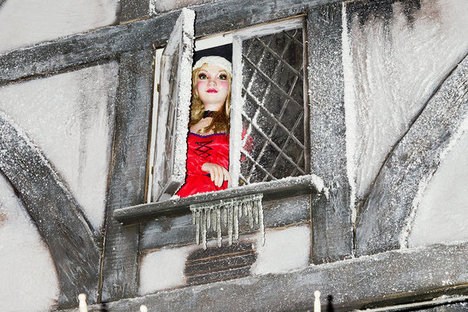 “Anderson found Dickens World to be “surprisingly grisly” for a park that markets itself to children; he noted several severed heads and a gruesome performance of “Oliver Twist” in the courtyard. Here, a mannequin of Nancy from “Oliver Twist.”” Source of caption and photo: online version of the NYT article quoted and cited below.
“Anderson found Dickens World to be “surprisingly grisly” for a park that markets itself to children; he noted several severed heads and a gruesome performance of “Oliver Twist” in the courtyard. Here, a mannequin of Nancy from “Oliver Twist.”” Source of caption and photo: online version of the NYT article quoted and cited below.
(p. 48) . . . even if it were possible to create a lavish simulacrum of 1850s London — with its typhus and cholera and clouds of toxic corpse gas, its sewage pouring into the Thames, its (p. 49) average life span of 27 years — why would anyone want to visit? (“If a late-20th-century person were suddenly to find himself in a tavern or house of the period,” Peter Ackroyd, a Dickens biographer, has written, “he would be literally sick — sick with the smells, sick with the food, sick with the atmosphere around him.”)
For the full story, see:
SAM ANDERSON. “VOYAGES; The Pippiest Place on Earth.” The New York Times Magazine (Sun., February 7, 2012): 48-53.
(Note: ellipsis added.)
(Note: the online version of the story has the date February 7, 2012 (sic), and has the title “VOYAGES; The World of Charles Dickens, Complete With Pizza Hut.”)

